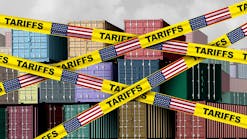According to a new report from LevelTen Energy, North American renewable energy developers are struggling to build solar and wind projects fast enough to keep up with demand because of the extremely difficult development landscape. This is leading to a shortage of power purchase agreements for corporations and other large energy buyers, which are critical to bringing new clean energy projects online and meeting corporate and federal net zero targets. This rapidly growing imbalance between PPA supply and demand, combined with skyrocketing development costs, has raised PPA prices 9.7% during the first quarter of 2022 to nearly $40 per MWh, according to LevelTen’s Q1 PPA Price Index report. Year-over-year, this represents an astounding 28.5% increase.
Rising development costs and market uncertainty are driving prices up
Many developers rely on PPAs – long-term energy contracts – with corporations and other large-scale energy buyers in order to secure the financing required to construct new multi-million dollar solar and wind projects. But the cost models used to price PPAs are becoming increasingly unwieldy as regulatory, interconnection, and supply chain challenges make it difficult to pin down costs and construction timelines.
“Every aspect of project development has risks to evaluate and balance,” said Gia Clark, senior director of Developer Services at LevelTen Energy. “These days, these risks feel particularly high-stakes. Developers must factor these complexities and uncertainties into PPA offers to safeguard their project success, as well as their business’ long-term financial security. As long as these myriad headwinds persist, we can expect elevated PPA prices across North America.”
Supply chain issues have also taken a toll on developers in terms of rising costs and shipment delays. A LevelTen survey of 57 developers this quarter revealed that 40% said they were able to find new suppliers that can more reliably deliver components. However, 28% were unable to make changes to supply chain operations despite wanting to do so.
Regional and federal regulatory issues cause hurdles to development
Renewable energy project developers are also facing hurdles to development as a result of regional and federal regulatory activities that have generated uncertainty in places where PPAs are in high demand, including ERCOT and PJM.
- The Electric Reliability Council of Texas (ERCOT) is the independent service operator (ISO) that oversees the electricity market in Texas. ERCOT has some of the highest settlement values for energy buyers, which makes it a popular region to procure. However, changes to regulations that place a cap on the maximum price that power producers can earn could lead to uncertainty on returns in the future. Since last quarter, ERCOT’s P25 solar PPA prices rose by 13.3% to $32 per MWh, while wind prices stayed nearly flat at $26.70 per MWh.
- In the PJM ISO, which serves 13 states in the northeast, regulators are working through a backlog of thousands of interconnection applications that represent nearly 300 gigawatts of new sources of renewable energy awaiting assessment to be added to the grid. Slow progress on clearing this backlog has contributed to the spike in the region’s PPA prices and a lack of selection in an area that has a high demand for PPAs. Since last quarter, PJM’s P25 wind PPA prices rose 15.6% to $55.10 per MWh, and solar prices rose 2% to $44 per MWh.
- The U.S. Department of Commerce’s recent announcement of potential new tariffs on solar cells imported from four southeast Asian countries, where 80% of solar cells are imported from, could set developers back on the supply chain improvements they’ve been able to make. “We are disappointed by the Department of Commerce’s decision to investigate the Auxin petition, which is already creating significant – potentially long-term – negative impacts on the renewable energy industry,” said Rob Collier, VP of Energy Marketplace at LevelTen Energy. “We need regulations that scale America’s renewable energy manufacturing capabilities, but Auxin’s petition fails to accomplish that goal and bottlenecks renewable development. As the latest IPCC report says, we are almost out of time to reach net zero. We need to build more clean energy as fast as we can.”
Demand for renewables remains undeterred
Yet, for the moment, corporations and other large energy buyers aren’t deterred by rising PPA prices. Eager to meet their clean energy targets, energy buyers continue to pursue PPAs, which are delivering higher value as wholesale electricity prices also rise.
Natural gas prices, which have been driven up in part by the war in Ukraine, have also contributed to rising PPA prices. When gas prices increase, the value of locking in renewable energy at a specific price increases, driving more demand to the market.
“Even in these very challenging times, we are seeing buyers and developers take a partnership approach to get PPA deals done,” said Collier. “We and our network of energy advisors are working with buyers and developers on new approaches to PPA contracts that help both parties address the unprecedented market dynamics and successfully close the transaction.”
*Prices cited represent an average of the 25th percentile of PPA prices of each ISO on LevelTen’s Energy Marketplace.


